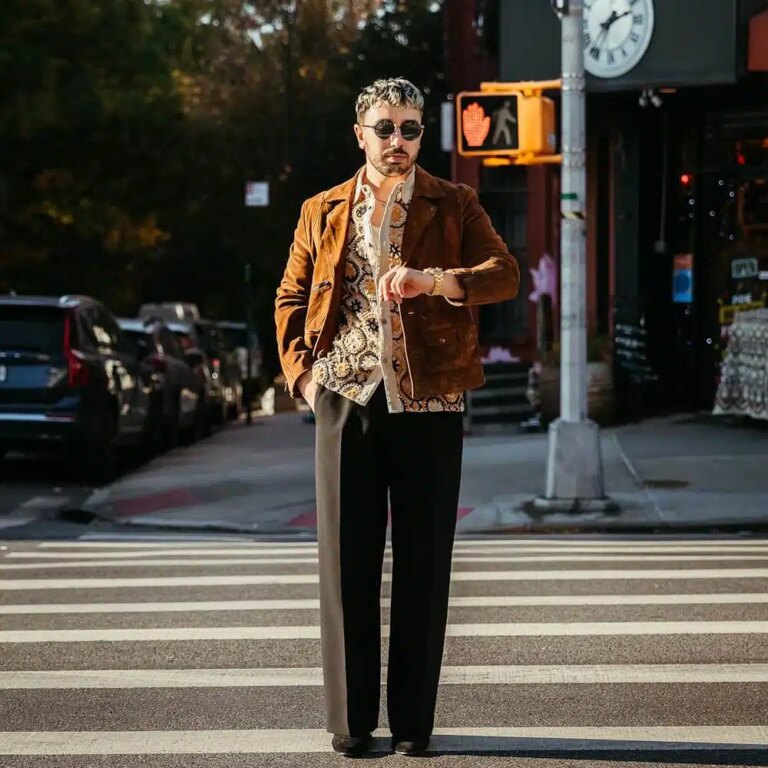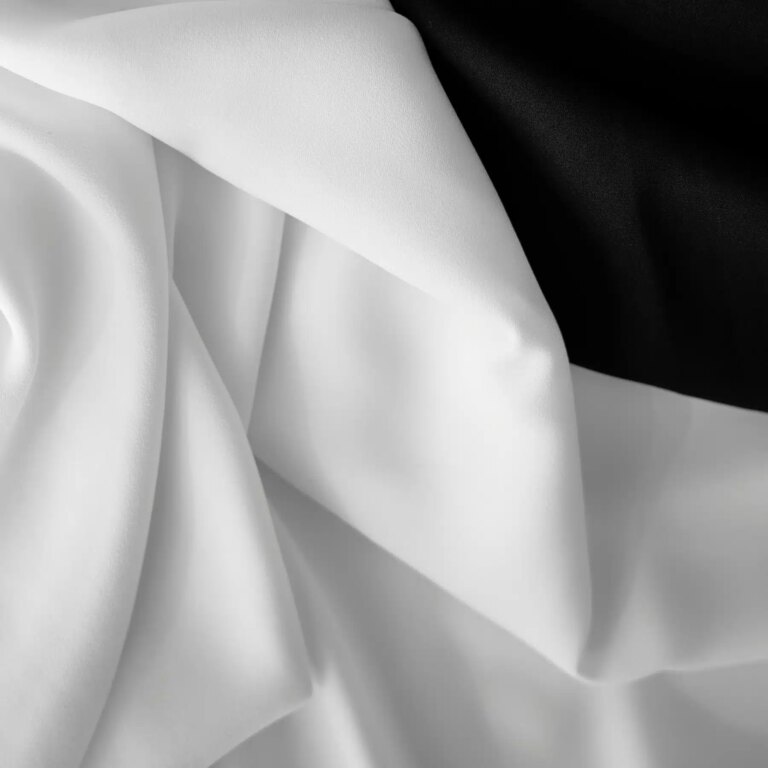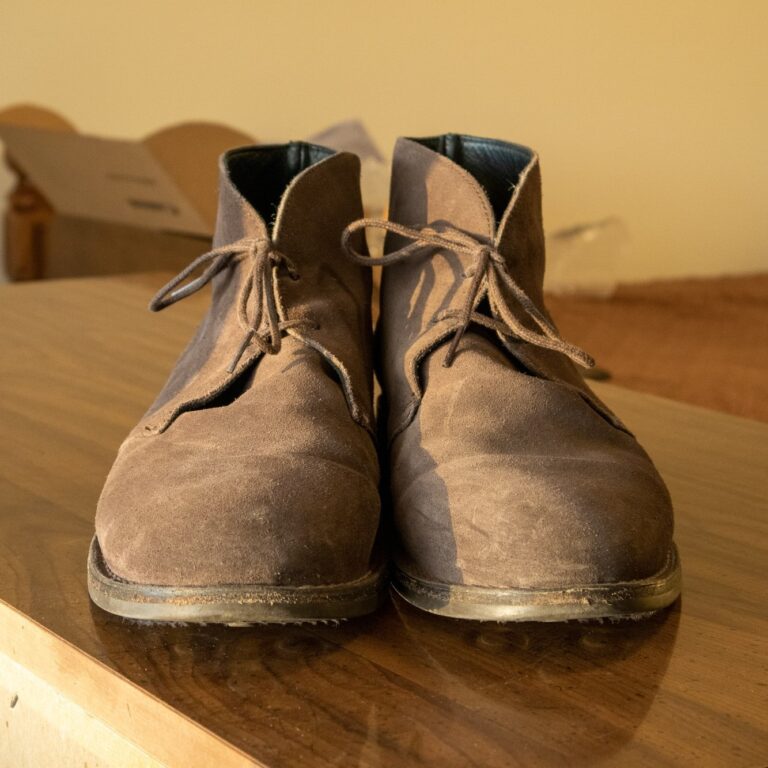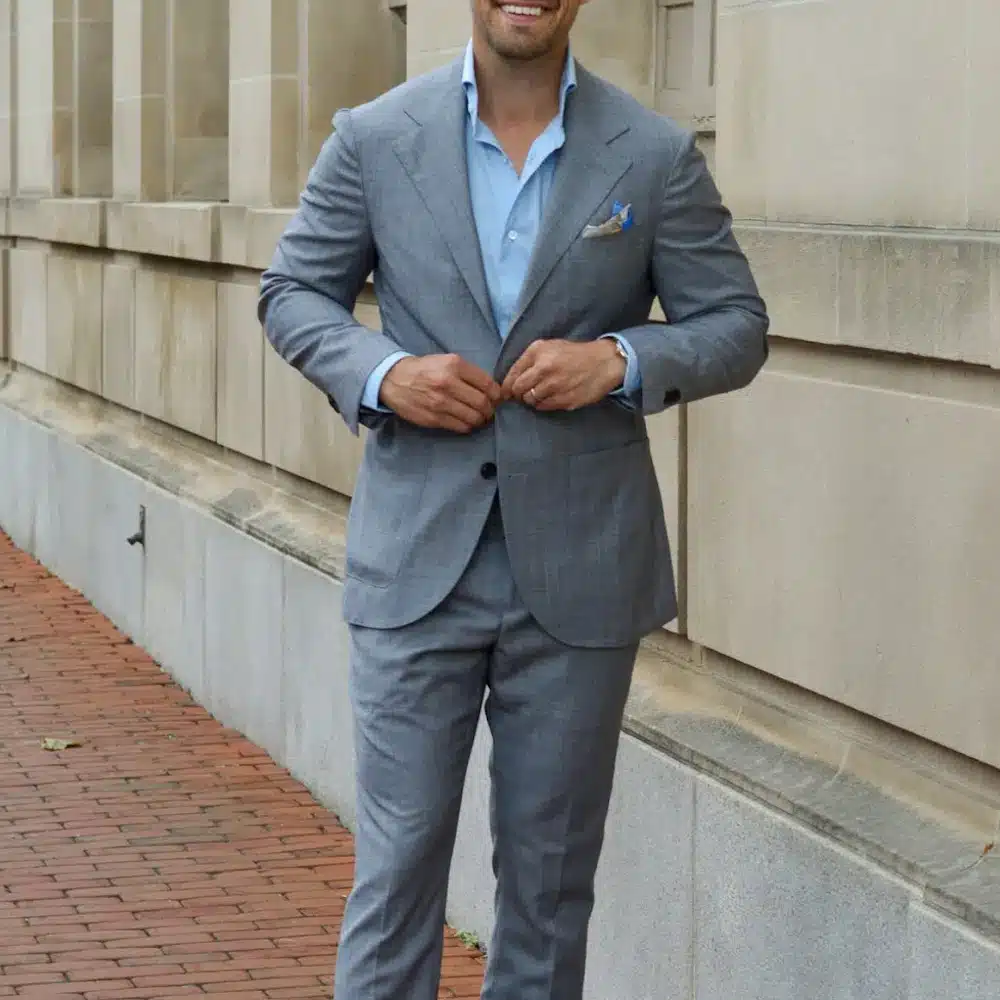
Wearing suits with no tie is pretty commonplace these days. However, there’s a time and place for doing it and a right and wrong way to do it.

Today, even in the most formal business-centric districts, you’ll see a lot of men running around in a suit with no tie. Summer is the intern season at my day job. Even these fresh-faced, oft-stressed kiddos tend to be comfortable enough to show up tieless after the first day.
This trend, now a staple, started in the 1960s. Unless you were in the office itself, and it wasn’t Friday, men started enjoying letting their necks breathe. It was the white-collar man’s way of dipping his toe into counterculture.
Even now, though, there’s a right and wrong way to do it. Believe me, you can’t just take your tie off at the end of the day and think you’re nailing the look. Don’t worry. The considerations are easy to understand and pull off.
Can You Wear a Suit With No Tie?
So, can you wear a suit with no tie? Yes, of course.
A full suit with no tie can fall into either the business casual or cocktail dress codes.
And even these days, a lot of offices allow you to wear a tieless suit. Does this mean a tieless suit can technically be business proper, too?
Dress codes, in a way, are a living organism. They’re always changing due to the conventions of the day, which aren’t even consistent through industries and generations.

I wouldn’t call a tieless suit business formal. You’ll still need a tie in most important meetings if you’re in a suit-wearing industry. Imagine if your lawyer arrived at court to defend you sans tie.
That said, you must always consider the occasion. However, that’s not the only thing to consider when it comes to how to wear a suit with no tie.
How To Wear a Suit With No Tie
The main three considerations I recommend are:
- The occasion
- The shirt fit
- The way the collar sits
The Occasion
Of course, respecting the dress code is the most important thing here. If you get invited to a party and the hosts require you to wear a tie, you must follow suit (pun intended). If you know your place of work prefers you wear a tie, accommodate.
Naturally, the most formal occasions require a tie. Black tie and white tie ensembles always require some form of formal neckwear (e.g., a bowtie).
And when in doubt, just put a tie on. You might be interviewing for the most casual tech company in the world. However, unless you’ve been in the offices, you never know just how relaxed the office culture is.
Frankly, even if you know how casual the office culture is, you should still wear a tie to an interview. Let’s say you’ve interned there for the past few summers and are now up for a proper job. By wearing a tie, your interviewer will know that you know when it’s time to be serious.
A business with a casual office culture is still a business. Unless a higher-up explicitly tells you not to wear a tie, err on the safe side.
Relatedly, meetings with external clients often require a tie.
Occasions you likely won’t need a tie include many weddings, parties, most restaurants (even the fanciest ones will usually just require a jacket), and networking events. In fact, when it comes to networking events, going slightly casual often makes you more approachable.

As always, though, check the dress code in any of these scenarios.
The Shirt Fit
The fit of your button-up is always important. However, wearing a well-fitting shirt is even more important when you’re not wearing a tie.
Often, you can cover ill-fitting sleeves because they go under your suit jacket. You can also cover an untailored shirt body by bunching it up in the back, which, again, the suit jacket will cover.
Plus, the tie can physically hold an off-fitting collar together and visually hold the whole suit together.
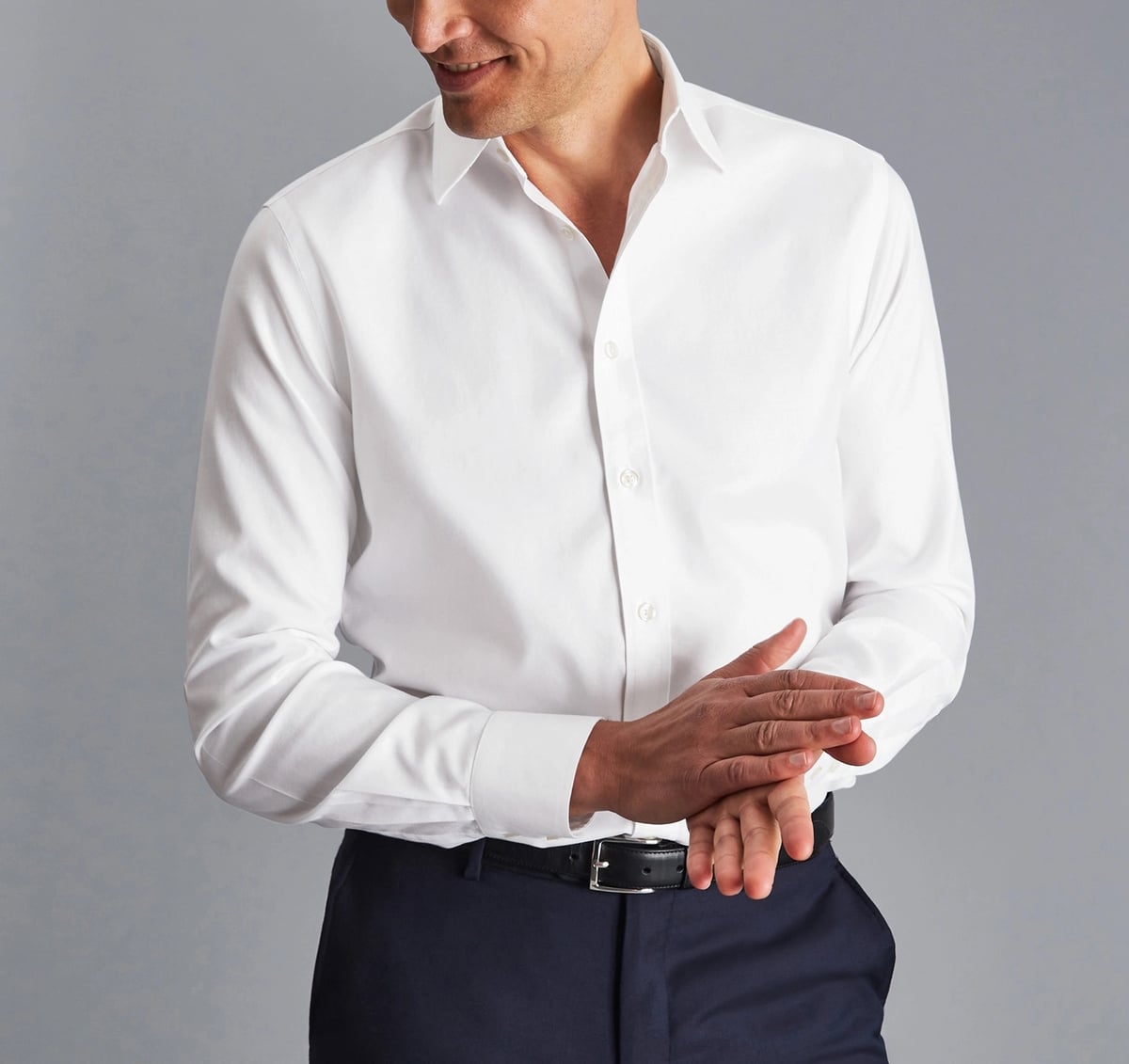
An improperly-fitting shirt and suit worn without the tie “fall apart”. It looks unintentional and sloppy. Even if you go for a looser or an oversized look, the silhouette’s lines should be clean.
The Shirt Collar
The following shirt collars are meant to be worn with a tie:
- Forward point collars
- Cutaway collars
This is especially true when it comes to cutaways. They’ll spread too far away from each other, creating an awkward gap.
However, there are two exceptions to this rule.
The first is if you go for the “invisible tie” look. This means buttoning the top button but not attaching a piece of neckwear to the shirt. It’s a choice. It’s not for everyone, but at least it looks intentional.
The second is if the shirt features inserts on the collar points for collar stays. This will allow the collar to sit with enough structure that it looks neat and proper.

The following collars are necktie optional:
- Spread collar
- Button-down
- Club collar
And the following shouldn’t be worn with a tie, ever:
- Camp or Cuban collars
- Band collar
- Mandarin collar
For the latter, you physically can’t attach a tie to those collars. They may as well be T-shirts.
Other Styling Tips
If you want to go for a more formal look, fasten the top button of your suit jacket. Undo only the top neck button of your shirt.
Otherwise, it’s perfectly okay these days to have the button below the neck unfastened as well.
Feel free to have fun with the shirt! If permitted to go tieless, you’re already in a casual enough environment. Go for something celebratory if it’s a party. An olive suit with a light red shirt for a Christmas celebration, perhaps? Or a holiday-appropriate pattern?
Contrast collars are also a great way to accent a tieless suit.

And finally, you might consider another kind of neckwear, like a cravat or a scarf.
Black Suit No Tie
Black suits tend to be pretty formal. Most guys don’t need a black suit — charcoal grey or navy are more versatile. However, let’s say you’re going for a traditional white tie and black suit combo.
Going tieless in this situation will have a just-got-off-work vibe. There’s nothing wrong with wearing a black suit with no tie. It has a handsome effortlessness to it.
Since black is so stark and neutral, you can also use it as a backdrop for an accent. Feel free to try dress shirts in brighter colors, like blue or red (hello, Mr. Wonderful), or even patterns. If you’re going to a theme party, you can incorporate florals, tartans, or theme-related motifs.
Even if you aren’t, feel free to choose these fun options just for the heck of it. Throw in a pocket square for another color pop.
Blue Suit No Tie
A blue suit is almost as formal as a black one but is far more conducive to wearing without a tie. Again, you can go for the after-work look and just wear it with a white shirt. That always looks great.
However, a broken suit can take the relaxed elegance even further. The navy blazer with khaki-colored pants is a preppy staple. Feel free to throw in a v-neck cable-knit sweater vest.
On a similar note, blue suits look great with an extra layer in between the shirt and jacket. Consider a cashmere vest, a pullover, or even a tech vest.
FAQ
Here are some common questions about wearing a suit with no tie:
Is it acceptable to wear a suit with no tie?
Yes, there are several occasions, usually with cocktail or business casual dress codes, on which you can wear a suit without a tie.
When can you wear a suit with no tie?
Business casual events and cocktail attire events often welcome suits without ties. Examples may include off-site networking events, weddings, restaurants, and parties.
Does a suit with no tie look terrible?
A tieless suit can look dapper yet relaxed as long as it has a proper collar and a good fit.
Conclusion: Suit No Tie, No Problem
Wearing a suit with no tie is normal, but there’s a right way to do it. Even more, there’s a wrong way to do it. Make sure you avoid the latter.
Again, the main things to consider are the shirt fit, the collar, and the occasion. However, again, have fun with your style! Make it yours!
How do you wear your tieless suit? Do you have a preferred collar? Let me know in the comments!
